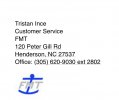Halfhitch
GreatGrady Captain
I agree that there are dangers involved with fuel vapors in the bilge of boats, especially since some electric components are wired direct so turning off the battery switches don't power-down the boat. Everyone should, before opening their fuel tank, remove the battery ground wires/cables at the battery before proceeding.I have reservations about removing the vent hose at the tank. While refueling, gas vapors will exit the tank through the vent fitting and can accumulate in the bilge. Although, there should not be any spark sources in the bilge, I wouldn't want find out I made a bad assumption. Instead a temporary vent hose might possibly be attached to the tank and routed up out of the bilge.
And of course, no shop vacs, unsealed flashlights, fans and such.




